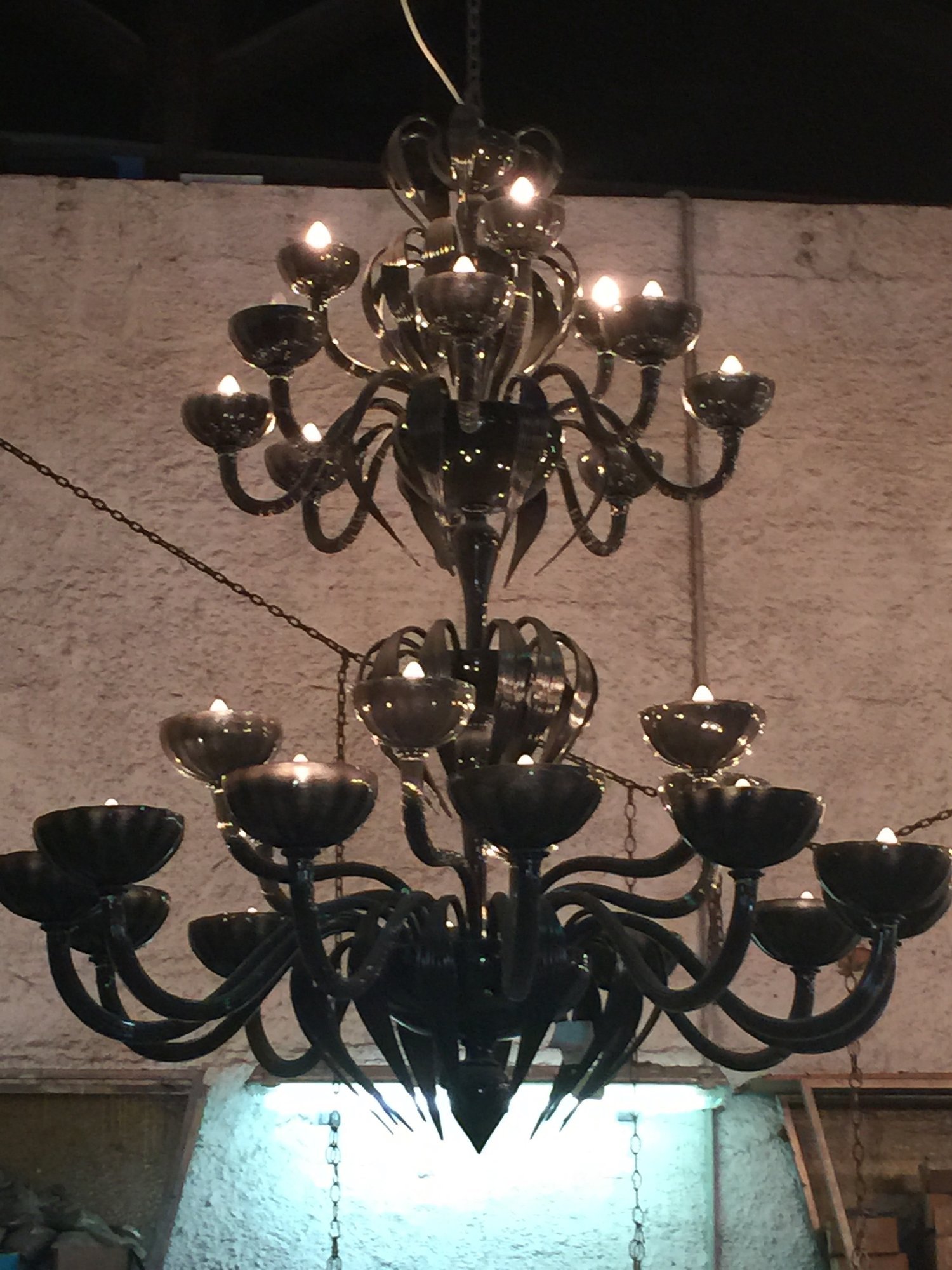Murano Island
This post has been updated on May 10, 2022.
This travel itinerary will come in two posts: the one you are reading and “Exploring Venice” as there is just way too much to share!
Murano, like many islands in the northern lagoon, was settled by Romans fleeing the fall of the Roman Empire and the Barbarian invasions of the late 5th century. While there is evidence of glass production in the lagoon from as early as the 6th century, the early economic activities of Murano were centered around fishing and trade in salt.
During the early years of the Republic of Venice, the territory called “Murano” encompassed the Islands of Sant'Erasmo, Vignole and San Michele. The territory of Murano had its own Grand Counsel, similar to Venice' Counsel of 10, and even minted its own currency. It was not until the year 1200 that Murano became governed by a podesta (magistrate) from Venice.
History of Murano Glass
Glass work is the most ancient and important art practiced in the lagoon, and was for hundreds of years one of the most important commercial industries of the Venetian Republic. The first recorded mention of a Glass Master in Venice, bottle-maker Dominicus Phiolarius, dates from the year 982. They mostly produced mirrors and bottles, before all of the furnaces were moved from the center of the city and concentrated on the island of Murano in the year 1291, which allowed them to expand and better protect trade secrets - it also then became a luxury item for wealthy Europeans to own. This happened due to the Counsel acting to protect the glass industry, domestically, by both prohibiting the importation of foreign glass into Venice and prohibiting foreign glassworkers from working within the city, in 1271.
They were incredibly successful until trade secrets started to leak and by the mid-1800s to mid-1900s, it all but vanished. It wasn’t until 1921 when the first Murano glass furnace was built to focus entirely on producing Murano glass in modern designs.
Today, works of Murano glas remain highly desired luxury products. The glass masters of Murano continue to produce many types of glass works. The commercial production of utilitarian objects, such as bottles, which can be easily and cheaply mass-produced elsewhere, is no longer practiced on Murano. Instead, Murano today is a literal melting pot where the skills and techniques developed by the masters, over nearly 900 years, are combined with contemporary artistic vision.
History of Murano Glass Beads
Interestingly, between the 1400s and 1700s, Murano glass beads were a form of currency for merchant sailors to use in exchange for spices, ivory, palm oil, and even slaves. It is claimed that Christopher Columbus presented the Natives of San Salvador with a gift of Murano glass beads when he first landed in "The New World" in 1492. The Murano glass factories produced up to 2 million pounds of these beads per year. Such beads were known as "trade beads" and later by the more ominous name of "slave beads".
Contrary to "trade beads", tiny Murano glass "seed beads" were both instruments of international trade and symbols of wealth within Europe. Seed beads, almost as small as the head of a needle, were used in embroidery, weaving, and jewelry making. The beads themselves were produced by the billions in the Murano glass Conterie factories by means of a unique process of "pulling" molten glass, invented on Murano.
Murano Glass Factory on Murano Island
From our hotel, we were given a free boat tender over to Murano Island. Once there, we were greeted by our tour guide, who is part of the Murano family. He guided us into the factory to watch the Artisans work. As you enter into the factory and look up, you can't help but notice the abundance of glass chandeliers hanging above you in every vibrant color.
And, you fully appreciate the time it takes to create one of these magnificent pieces, once you watch their demonstration.
It's amazing to think that these works of art are created from sand and through patience and skill, can emerge something so beautiful.
When the demonstration was over, we were escorted to the beginning of their 12-room gallery, showcasing the absolute genius of these Artisans. It was seriously like stepping into Willy Wonka's Factory, except for glass. Everything from hand railings, to mirrors, to lamps, and candelabras guided our way up the stairs to our first room.
Each room was just a little bit different from the other. They ranged from the common Murano glass pieces we see everyday, to absolutely works of art - scenery that requires layers upon layers of different glass to capture something, in what looks frozen in time. Other rooms offered beverage serving ware, to 24k gold, hand-painted pieces; to Cinderella-inspired mirrors. In fact, Lebron James had just ordered a $250K mirror that was still on display in the gallery (yes, it's a proud moment to say I've seen it before it was shipped off, though I wasn't allowed to take any pics of it).
Note that the custom, artisanal work comes straight out the factory we visited and can be shipped, within 4 weeks of order date. The smaller pieces you see in the U.S. are outsourced to other factories around the world. It's genuine but just not straight from Murano Island.


